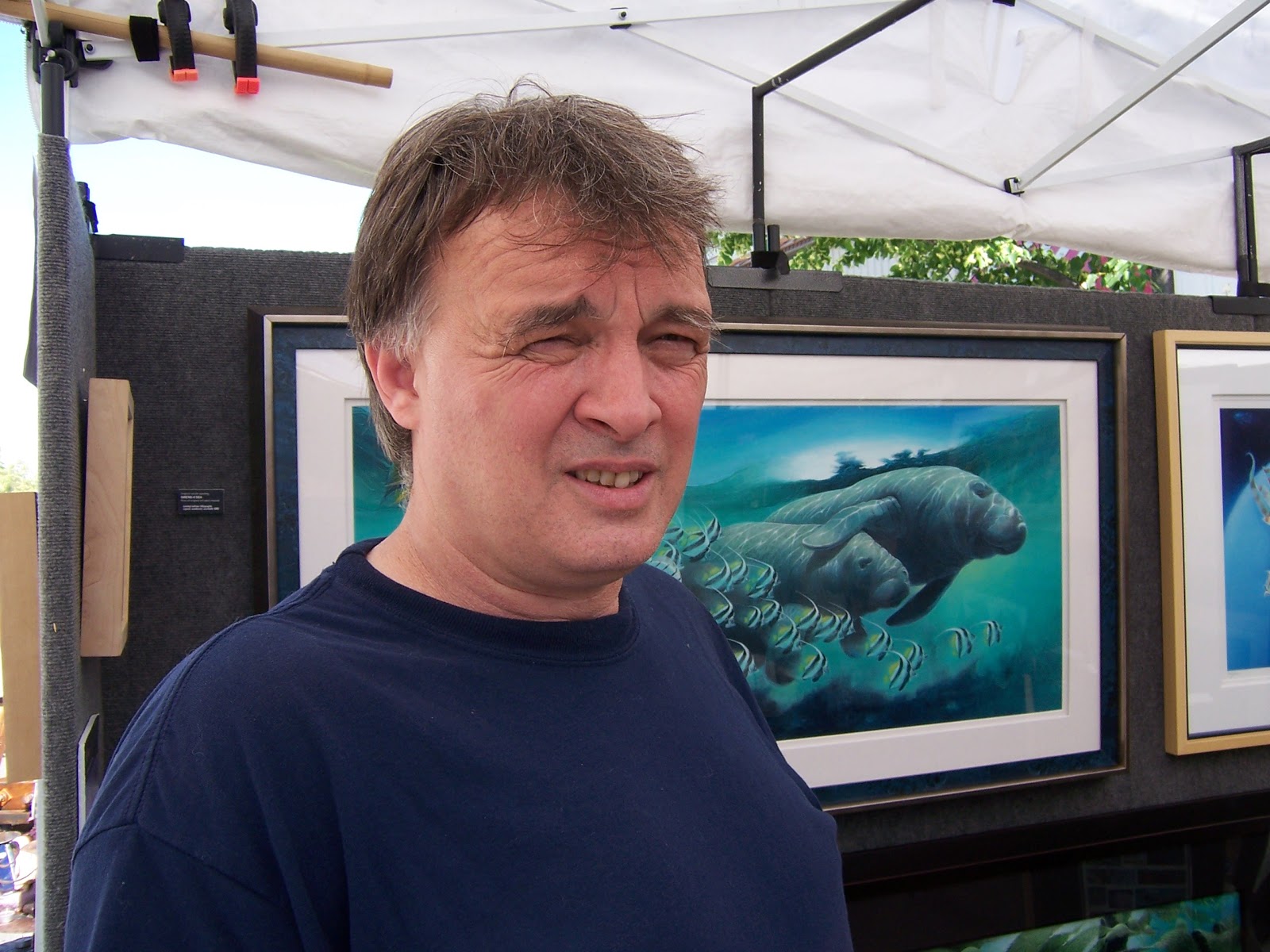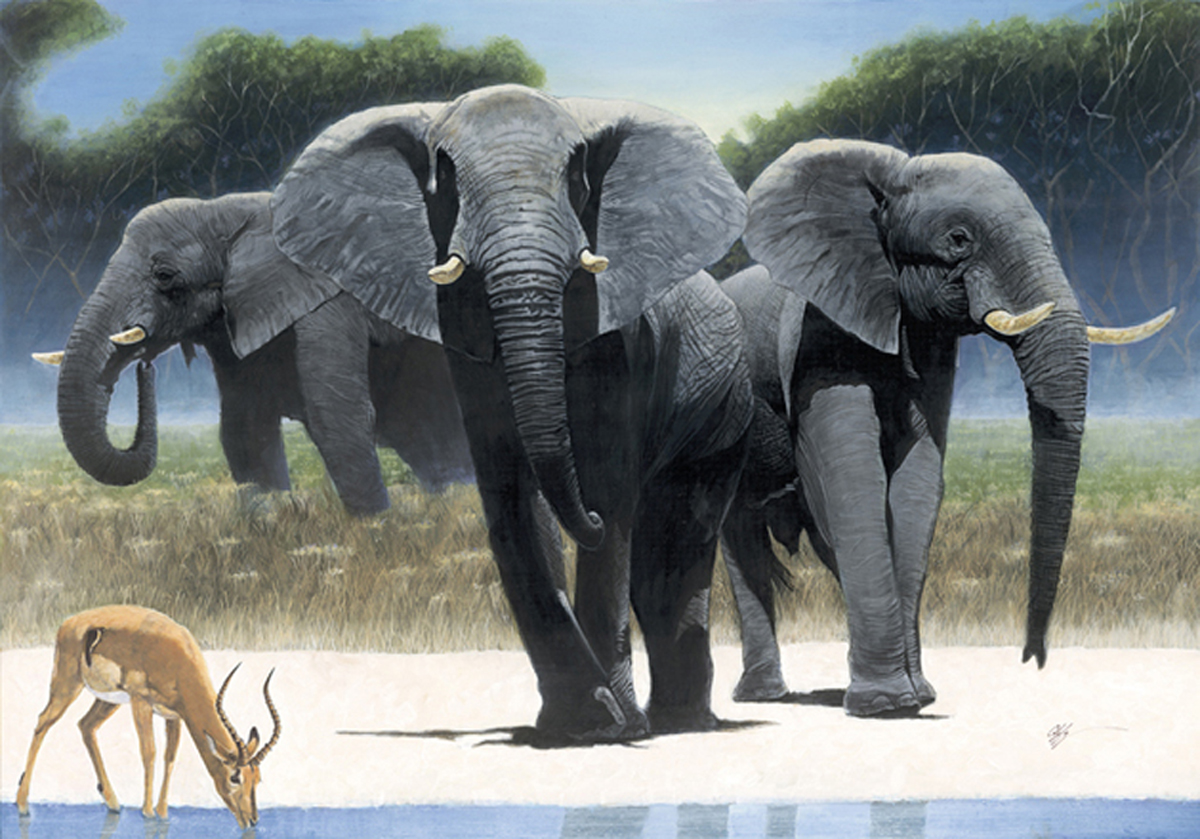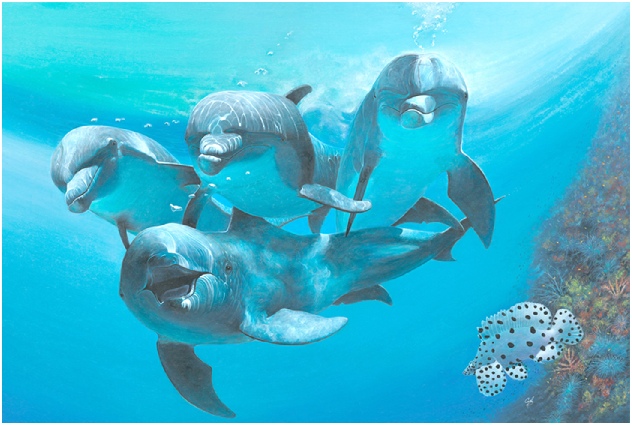




Durwood Coffey spent 32 years as an illustrator before retiring to
devote full time to his painting. Coffey shares with Dickerson Art
Gallery how his career provided valuable experience that informed
his approach to art.
An Interview with Durwood Coffey
Where do ideas for your paintings come from?
Ideas can hit me anywhere. I can be driving and see it in front of me. I get home
and sketch it out. Then I start drawing it out. Once I was leaving my workplace in
downtown Detroit and for a brief moment I saw my “Night Hunt” painting right
there in front of me. Since I’m painting wildlife, thoughts of animals are always
going through my head. Now and then, the ideas surface.
If painting is your love, why spend 30+ years as an illustrator?
Illustrator/Artist–this subject is about splitting hairs. People have said Norman
Rockwell is just an illustrator. Most any painter would love to be able to paint like
him. The same with Howard Pyle and NC Wyeth, beautiful painters called illustrators. Then there is Henri de
Toulouse-Lautrec, a fine art painter who created posters for money. If one is painting for a living, this is
excellent. Either for a client or one’s self, we always strive to produce the best possible art we can.
How is painting different from your work as an illustrator?
With illustration I’m working to satisfy the needs and directions of the
client, to present his product in the best light to help produce sales. With
paintings I’m satisfying my own needs and desires.
You talk a lot about process and composition. How is what you do
different?
The “process” is all the steps I take to achieve a finished painting. My
penciling, applying paints and mediums.
The “composition” is the placement of my ideas and arrangement of the
visual elements in my art. This is what art is all about. I don’t paint
animals just to show that I can paint an animal, but through composition I can paint a story of animals and
how I see them.
Who has most influenced your work?
In the early 70s I worked for Larry Topel. He is a great artist. I’ve always been inspired by him. I worked closely
with him, doing his penciling and a lot of pre-work on his projects so he
could keep painting on other works. What I learned from Larry was to work
like a professional. One wants professional looking art, yet at times we
may not think or act like a professional. One day Larry walked past my desk
and told me how I should be sitting and getting
focused. I would be working on a job and take it to him for approval. He’d
look at it and ask me, “What is this? Go back and do it right!” I learned
excellent work habits from Larry.
Working for R.C. Associates in the 80s, I worked with John T. He had the
most influence on my work. He was so adamant about composition.
Composition is everything, nothing else matters. It is the heart of art! He gave me a book that has been used
as the “bible of art” throughout universities for many years. The title is ”The Art of Color and Design” by
Maitland Graves. This is not a how-to-paint book. It’s about learning to understand composition.
John gave me this book and I looked at it and thought, “This book is old. What useful information could I
possibly learn from this book?” Boy, I was so wrong! Whatever success I have achieved I owe to John for
setting me on the right track in art.John gave me
this book and I looked at it and thought, “This
book is old. What useful information could I
possibly learn from this book?” Boy, I was so
wrong! Whatever success I have achieved I owe
to John for setting me on the right track in art.
“That’s good enough” should not be in an artist’s
vocabulary…but, in reality, sometimes it’s the
best we can do at that moment. I always strive to do my best work. Why would anyone want to work this hard
doing artwork and have the frame of mind that it may or may not turn out good?
Durwood Coffey spent 32 years as an illustrator before retiring
to devote full time to his painting. Coffey shares with
Dickerson Art Gallery how his career provided valuable
experience that informed his approach to art.
An Interview with Durwood Coffey
Where do ideas for your paintings come from?
Ideas can hit me anywhere. I can be driving and see it in front of me. I get
home and sketch it out. Then I start drawing it out. Once I was leaving my
workplace in downtown Detroit and for a brief moment I saw my “Night
Hunt” painting right there in front of me. Since I’m painting wildlife,
thoughts of animals are always going through my head. Now and then, the
ideas surface.
If painting is your love, why spend 30+ years as an illustrator?
Illustrator/Artist–this subject is about splitting hairs. People have said Norman Rockwell is just an
illustrator. Most any painter would love to be able to paint like him. The same with Howard Pyle and NC
Wyeth, beautiful painters called illustrators. Then there is Henri de Toulouse-Lautrec, a fine art painter
who created posters for money. If one is painting for a living, this is
excellent. Either for a client or one’s self, we always strive to produce
the best possible art we can.
How is painting different from your work as an illustrator?
With illustration I’m working to satisfy the needs and directions of
the client, to present his product in the best light to help produce
sales. With paintings I’m satisfying my own needs and desires.
You talk a lot about process and composition. How is what you do different?
The “process” is all the steps I take to achieve a finished painting. My penciling, applying paints and
mediums.
The “composition” is the placement of my ideas and arrangement of
the visual elements in my art. This is what art is all about. I don’t
paint animals just to show that I can paint an animal, but through
composition I can paint a story of animals and how I see them.
Who has most influenced your work?
In the early 70s I worked for Larry Topel. He is a great artist. I’ve
always been inspired by him. I worked closely with him, doing his
penciling and a lot of pre-work on his projects so he could keep painting on other works. What I
learned from Larry was to work like a professional. One wants professional looking art, yet at times we
may not think or act like a professional. One day Larry walked past my desk and told me how I should
be sitting and getting
focused. I would be working on a job and take it to him for approval. He’d look at it and ask me, “What
is this? Go back and do it right!” I learned
excellent work habits from Larry.
Working for R.C. Associates in the 80s, I
worked with John T. He had the most
influence on my work. He was so adamant
about composition. Composition is
everything, nothing else matters. It is the
heart of art! He gave me a book that has been used as the “bible of art” throughout universities for
many years. The title is ”The Art of Color and Design” by Maitland Graves. This is not a how-to-paint
book. It’s about learning to understand composition.
John gave me this book and I looked at it and thought, “This book is old. What useful information
could I possibly learn from this book?” Boy, I was so wrong! Whatever success I have achieved I owe
to John for setting me on the right track in art.John gave me this book and I looked at it and thought,
“This book is old. What useful information could I possibly learn from this book?” Boy, I was so wrong!
Whatever success I have achieved I owe to John for setting me on the right track in art.
“That’s good enough” should not be in an artist’s vocabulary…but, in reality, sometimes it’s the best we
can do at that moment. I always strive to do my best work. Why would anyone want to work this hard
doing artwork and have the frame of mind that it may or may not turn out good?
Composition is Key